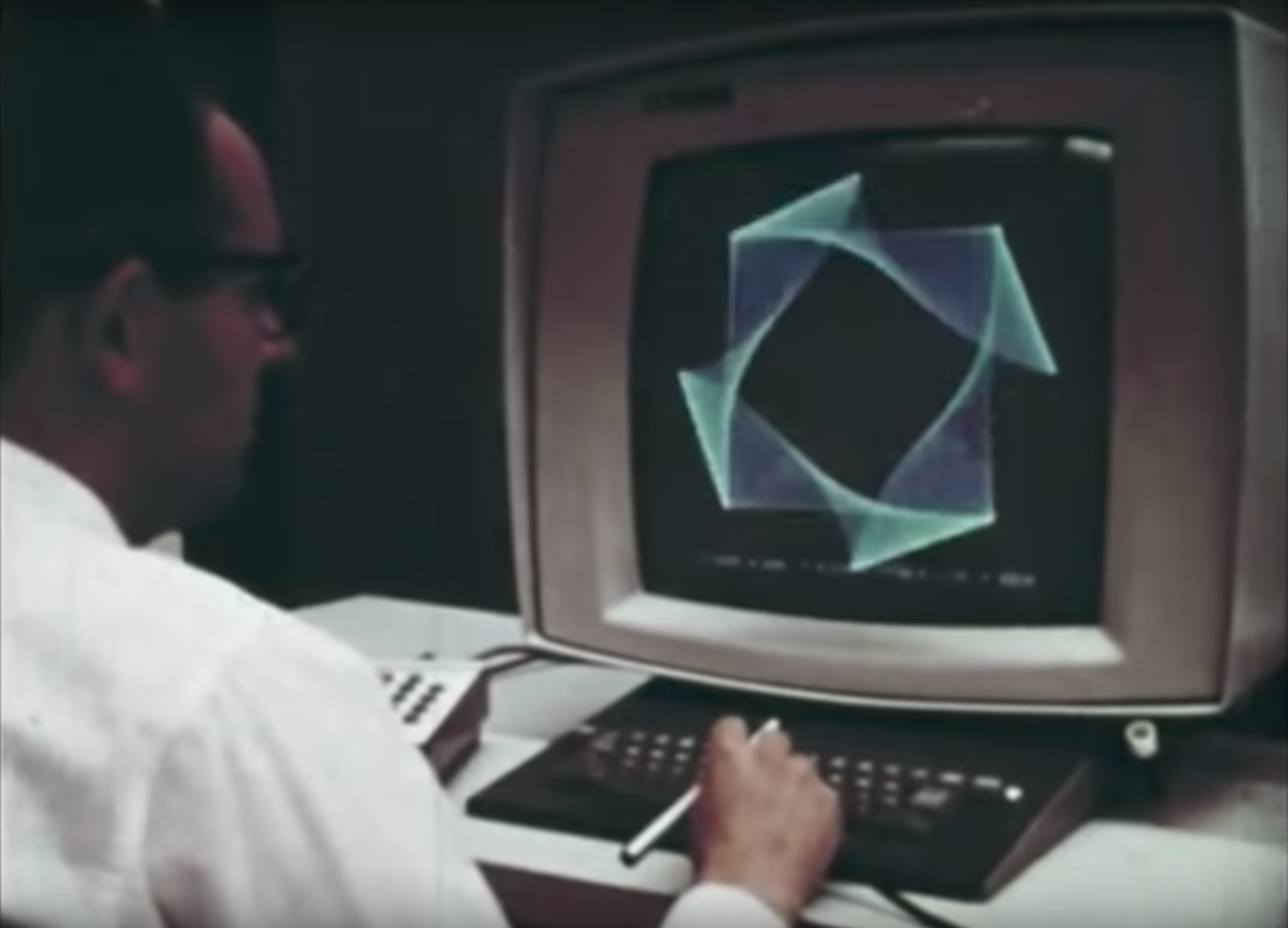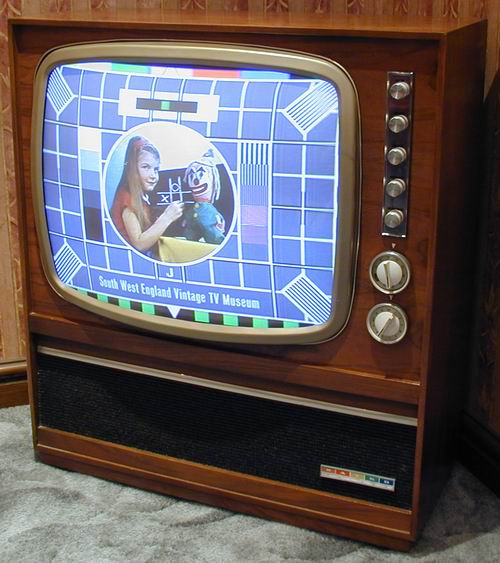Colour Revolution
The swinging 60’s was a cultural revolution reacting against the conservatism of the postwar period, embracing modernity and fun loving hedonism. It was at this time the television went from black and white to colour.
produced by: Jonny Fuller-Rowell
Introduction
This projection mapping project is based around five old TV sets (both real and projection mapped). Comprising of three scenes interspersed with white noise. The TV’s take it in turns to flicker into life to firstly present a series of of animations based on early computer graphics, all black and white and confined to there respective frames. The second scene transitions the televisions from black and white into colour using an animated pixel grid which eventually frees the pixels from their set positions. The third scene treats all the televisions as one screen, the colourful animation starts in the centre and gradually expands filling the televisions with spiraling psychedelic stars.
Concept and background research
I liked the idea of projection mapping onto an object that already had some intrinsic meaning / symbolism. The first colour television sets started to be available around the mid 1960’s, I was interested that this development in technology happened at the same time as one of the biggest cultural changes in Britain, the swing 60’s, and how this cultural shift mirrored this representational evolution changing how people perceived themselves and the world around them.
I wanted to narrate this idea using the transition to black and white to colour and also through the use of the tv’s frames.
I used early colour television sets as a starting point for the render and first programmed a simple flicker and a looping single horizontal line to imitate the televisions struggling to turn on, as if turned off since the 60's.
SCENE ONE: The first scene is inspired by early computer graphics which are black and white and confined to the dimensions of a frame. I wanted these to have a scientific feel.
SCENE TWO: The second scene is the transition form black and white to colour. Inspired by the pal colour test screen. I split the screens into an array of pixels with fluctuating colour values. Ranging from grayscale to RGB the animated movement of the pixels corresponds to the amount of colour they contain, so when they are in full colour the pixels would break free of their respective positions.
SCENE THREE: The final scene is in full colour starting with a swirl of different shapes and colours starting in the centre screen and then extending throughout all of the televisions and eventually expanding beyond them.
Technical
This projection mapped project was written in OpenFrameworks with addons: ofxGui, ofxJSON, ofxPiMapper and ofxXmlSettings. Here is the basic breakdown of techniques included in each section:
Flicker / Moving line: if-statements - to control the line looping vertically on the tv, ofGetElapsedTimeMillis() - to control the timing of the flicker and line, ofRandom - to create the flicker effect.
Scene one: vectors - to create a grid of objects, sin - to effect the movement of the floating rectangle and hexagons, if statements - to define the frame of the tv, nested loops - to multiply objects in a scene.
Scene two: Vector - to create a starting position for the pixels, ofSignedNoise - to control the amount of movement of the pixels away from their starting point, ofGetElapsedTimeMillis() - on control the timing to the transitions.
Scene three: ofRandom - to affect the RGB values, function - of the star object to be able to manipulate its values more easily, rotate, sin & cos to affect the movement to the stars.
Future development
I would like to extend the idea of using real objects with projection mapped ones I think this produced an interesting perceptual effect.
I would like to attempt more intricate and interesting line drawings used in the first scene. Using triangles and sin to create more elaborate patterns.
I would like the third scene to be more generative so it produces a different images every time it is played, this could even respond the to viewer in some way.
Self evaluation
I felt like the the overall idea worked well and I was pleased with how it looked. We were able to use a couple of old CRT televisions and although I had initially wanted all of them to be real tv’s I thought the mix of real and projection mapped TV's added an extra dimension. The production of the projection mapped televisions could have been better as the sides of the boxes were not flat and therefore didn’t produce a crisp 3D object.
Although I think the animations did communicate the intended idea overall I felt the code was very simple and over relied to heavily on manipulating the code produced in class rather than generating original code. I did however learn a lot from doing this increasing my confidence in that I could communicate and idea through code.
References
1) scene one, algorithmic thinking homework.
2) scene two, harlem shake homework.
3) Scene 3 psychedelic stars, Mandala shapes homework.


































































